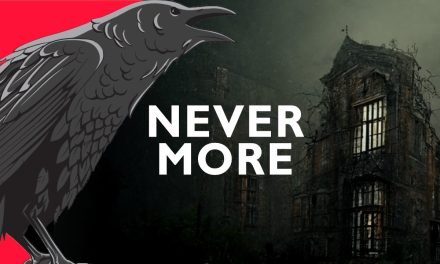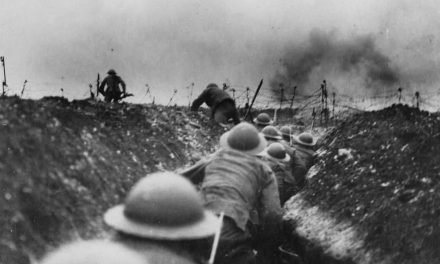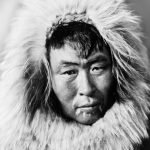If you want to find the best Native American history books, jump in your car and head to the National Museum of the American Indian in Washington DC.
It’s an awesome building, designed to look like a wind-swept rock. It houses the country’s largest collection of Native American history books, photos and publications.

1500 feet of shelves dedicated to American Indian history. It holds a wealth of Tribal Nations’ culture, language, art, music, religion, and medicine.
But hey, maybe you don’t have time for a road trip. Don’t worry, we’ve got you covered.
Here are our favorite Native American history books, by both non- and Native American authors. The best ‘must-read-cuz-I’m-addicted-to-non-fiction’ books on Native American history.
I divided the list into categories with a summary, pros and cons list, and links to buy the books. Nudge, nudge.
But first, it’s worth knowing what you should be looking for in a good history book.
What makes a good history book?
If you’re going to lay your hard-earned cash down, it should be a book worthy of your time. So how do you pick the best?
Short answer. It doesn’t matter.
Trust your instinct and just choose what appeals to you.
But, if it’s popular history (books written for the masses) or peer-reviewed academic journals you’re after, there are some basic rules on what makes a page-turner.
A good history book should be:
- Well researched and grounded in historical theory
- Uses sources as close to the primary as possible
- Acknowledges existing research and books on the subject
- Sparks an interest in the subject and leads to a desire for more reading
- Strong narrative and well written
- a balance between accurate information and engaging writing
Bad history books:
- are too general, biased or emotional
- make claims without evidence
- have poor sources/footnotes/endnotes
- don’t understand how to structure a history book
Why we make these recommendations
We make these recommendations because these books all offer important insight into the history, culture, government, religion, art and language of Tribal Nations of North America.
That includes Canada, Greenland, Alaska and even the Arctic circle.
They examine a vast array of topics from early history, through Native Americans during the colonial period, the Trail of Tears, the rise of the reservations, and into the modern history of North America.
If you’re a snoop, some good publishers to look out for are the University of Texas Press, University of New Mexico Press, Yale University Press and Island Press.
QUICK LINKS
1. Best book for beginners
2. Best book for students
- An original perspective on the history of Native America
- Challenges the narrative that Native Americans were passive and naïve strategists
- Puts Native Americans at the center of the story
3. Best book for kids
- 50 games and crafts to introduce children to Native American culture.
- hands-on, immersive in the culture
- easy to understand
4. Best books about the Tribes of North America
- stories are told by Lakota elders to James Walker around 1900
- great oral tradition
- A fantastic collection of Lakota myths and teachings from the University of Oklahoma Press.
- Discover the universe and planet Earth through the eyes of the Lakota
FULL REVIEWS
CATEGORY 1: Best Book For beginners
WINNER: Native American History For Dummies
By Dorothy Lippert
Don’t be put off by the title! This book isn’t going to win any awards, but it does exactly what it says on the tin. If you’re looking to dip your foot solidly into Native American history, this is a fantastic start.
The author is Native American, and expertly discusses ten thousand years of Native American history with ease.
It begins with the early days of migration from Asia and the gradual move south through the continent. It discusses the pre-Columbian period of farming, fishing, hunting and trading. It looks at how tribes were formed and how cultures differed.
It covers at the impact of European settlers on the New World, the Native American wars, battles and warriors. It also offers a ray of hope with the modern movements to reclaim Native identity.
It’s a great resource on how the Native American presence on the American continent developed and changed over many thousands of years.
I dip in and out. It has info on all major tribes and famous Native Americans. Think Pocahontas, Sitting Bull and Sacagawea.
A handy reference.
What we like:
- Packed with facts
- Well structured and easy reading
- One of the best Native American history books for beginners I’ve seen
What we don’t like:
- Nothing really, but I acknowledge the ‘For Dummies’ format is not for everyone
The best Native American history books for students
1. Indigenous Continent: The Epic Contest for North America
by Pekka Hämäläinen
Historians have long used the idea of a “colonial” America, where history is told from the perspective of Europeans.
The acclaimed Oxford University historian Pekka Hämäläinen challenges this idea. His book covers four hundred years of history from the point of view of the Original Inhabitants. It shows how distinct native nations ruled North America well into the 20th century.
What we like:
- An original perspective on the history of Native America
- Challenges the narrative that Native Americans were passive and naïve strategists
- Puts Native Americans at the center of the story
What we don’t like:
- At 592 pages it is not a casual read
- Sometimes goes into unnecessary depth
2. An Indigenous Peoples’ History of the United States
by Roxanne Dunbar-Ortiz
Dunbar-Ortiz’s book is a sobering and emotional read that challenges the very idea of the founding of the United States.
It examines how colonial genocidal policy towards the Native Nations reached to the highest office in the land in President Andrew Jackson. The book is thought-provoking, painful, unapologetic and much-needed.
What we like:
- Engaging and well-written
- Easy enough for high-schoolers to understand
What we don’t like:
- While it is an important book, it is a difficult and heavy read
- Dunbar-Ortiz is a campaigner for Native American rights. This comes across in her writing and we love her for it. However, some people found it distracted from the historical text.
3. Bury My Heart at Wounded Knee: An Indian History of the American West
by Dee Brown
“I shall not be there. I shall rise and pass. Bury my heart at Wounded Knee.”
From https://allpoetry.com/American-Names
Dorris “Dee” Brown’s 1970 classic was based on a poem from 1930. It delves into the westward colonization of America from 1830 to 1890. It’s written from the point of view of Native Americans. This led many to wonder if Brown was a Native American.
This gripping book from the University of New Mexico Press covers the American expansionism, Native displacement and relocation and never-ending wars with the government. It’s a tough read, but gripping.
What we like:
- A classic for all interested in Native American books
What we don’t like:
- Perhaps too much detail about all the different Native tribe names
4. Nine Years Among the Indians, 1870-1879: The Story of the Captivity and Life of a Texan Among the Indians
by Herman Lehmann
In 1870, Apache raiders in Texas captured 11-year-old Herman Lehmann. The tribe held him captive for four years before he escaped. He lived in the wilderness and was later adopted by the Comanche.
His book is about life with the Apache and Comanche tribes. He describes how, after several years, he began joining in on raids on white rangers and other native American tribes.
Lehmann doesn’t sugarcoat his experience, which is brutal and harrowing at times. The book describes in gritty detail Native American life in nineteenth century America. It also covers how he learned the ways of his captors.
It’s one of only a handful of written records of Indigenous People of Native America and is essential reading.
What we like:
- An inspiring tale of life in harsh nineteenth-Century America
What we don’t like:
- The dated language can make it a little tough to read
5. The Earth Is Weeping: The Epic Story of the Indian Wars for the American West
by Peter Cozzens
Peter Cozzens’ award-winning book tells the story of the wars that devastated Native American cultures across America after the Civil War.
It’s well-researched and full of personal accounts in great detail. There are appearances from Custer to Crazy Horse, Sitting Bull to Geronimo. The Earth Is Weeping is a page turner – an accurate account of American expansion and the Native American response.
I would consider reading this together with Bury My Heart At Wounded Knee.
What we like:
- Brings much needed understanding to the plight of Native Peoples
What we don’t like:
- While an important book, it is a painful read.
The Best Native American history book for kids
A Kid’s Guide to Native American History
By Yvonne Wakim Dennis and Arlene Hirschfelder
Aimed at a young audience, this book has over 50 games and crafts to introduce children to Native American culture.
It discusses different Native tribes by region, such as the Mohawk, Shoshone, Apache and Yupik. Chief Joseph and Maria Tallchief are famous American Indians that appear in the book.
The language is easy to understand. I think the book would suit children around age 10 as there is lots of text. Younger kids could enjoy learning how to make a cornhusk doll.
There are many topics for beginners. It’s a solid starter Native American history book for kids.
Best books about the Tribes of North America
The First Peoples’ contribution to American heritage, their influence on art, literature, music, dance and language, is profound.
However, the tribes of North America are not a single homogenous unit. They are as diverse as they are widespread.
It’s almost impossible to narrow down the choice, but this list covers a small selection of books about individual tribal nations of North America. It includes the Lakota, Comanche, Apache and Cherokee.
1. The Sons of the Wind: The Sacred Stories of the Lakota
Edited by D.M. Dooling
This is not a history book. The stories are told by Lakota elders to James Walker around 1900. It covers Native American myth and traditional teachings, so is not a historical account. However, we felt it is worth mentioning just for the vivid storytelling.
It covers relationships between the Lakota spirits, as told as part of the great oral tradition. The elders discuss the earth, the universe and the Great Mystery.
What we like:
- A fantastic collection of Lakota myths and teachings from the University of Oklahoma Press.
- Discover the universe and planet Earth through the eyes of the Lakota
What we don’t like:
- Nothing! It’s a wonderful book
2. Empire of the Summer Moon: Quanah Parker and the Rise and Fall of the Comanches, the Most Powerful Indian Tribe in American History
By S.C. Gwynne
A powerful telling of the forty-year long war between the Comanches and the white colonists. The book also covers the story of Quanah, considered the greatest chief of the Comanche Indians.
The Comanche are well-known and adept horse riders. Their skills as warriors are legendary, known for stopping to northward expansion of the Spanish, as well as the westward expansion of the French from Louisiana.
However, the Comanches can claim two important and lesser known facts in North American history. One, they were so feared that Texas created the Texas Rangers in response to the losses they were taking from Comanche warriors. Secondly, the six-gun was invented in response to the threat posed by Comanche warriors.
For forty years, the Comanche stopped the development and expansion of the colonialists into Native America. This is their story.
What we like:
- Well researched and written
- Interesting match of the story of the Comanche and Quanah
What we don’t like:
- The Kindle version could do with maps
3. Trail of Tears: The Rise and Fall of the Cherokee Nation
By John Ehle
This is the story of the biggest betrayal in American history. From 1830 to 1850, the US Government forcibly moved about 60,000 American Indians to American Indian Reservations. It was an attempt to clear the way for expansion into the American continent.
In order to survive, the Cherokee negotiated with the settlers. The US government moved the tribe from their ancestral homelands to areas west of the Mississippi River.
The settlers promised the Native Americans wealth and better land. But the Native Tribes suffered exposure, disease, and starvation. Thousands died before arriving at their destinations. The journey has become known in Cherokee as “trail where they cried”, or The Trail of Tears.
What we like:
- Fascinating history of the Cherokee, the power struggles between the Indigenous People and the colonial settlers, and the horror of the forced removals.
What we don’t like:
- The removal and transportation of Native Americans only happens in the last quarter of the book. The first three quarters is more of a history of the Cherokee (a good one though!)
- Some have criticised the book as being biased toward the US settlers
For more books on Native People
Visit The National Archives collection of materials on Native America and American Indians.
The staff of the First Nations Development Institute have compiled a list of what they consider essential reading for anyone interested in the indigenous peoples’ experience of Native America.
November is National Native American Heritage Month – read more here.


















